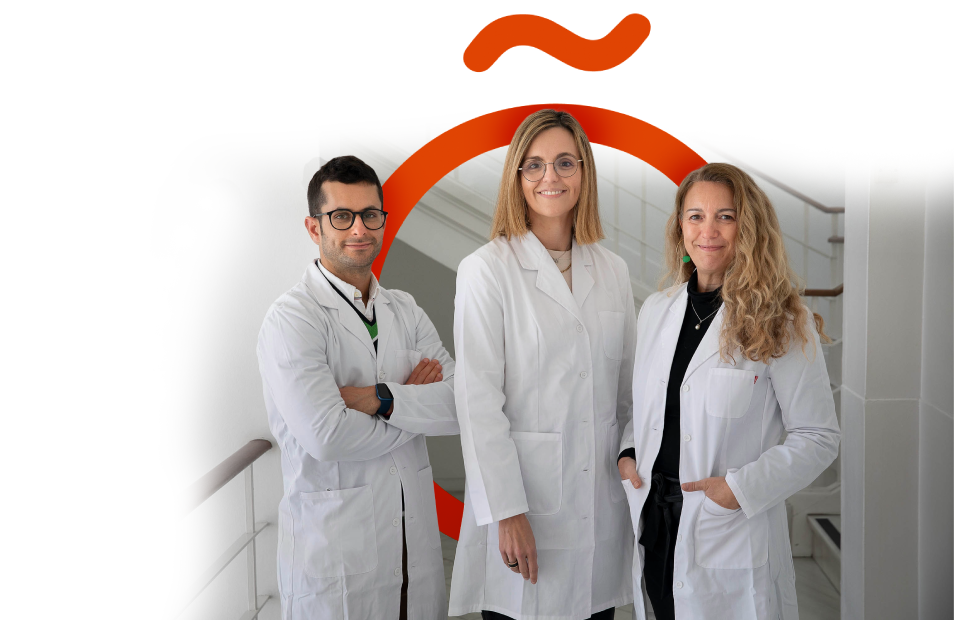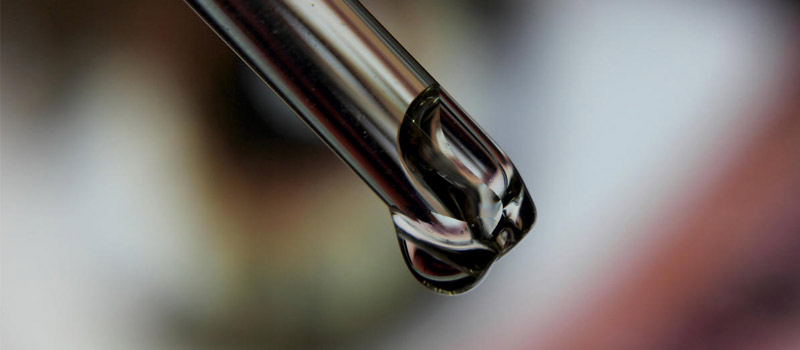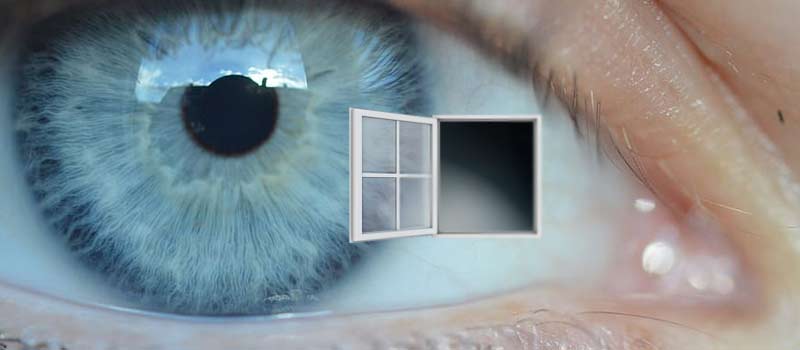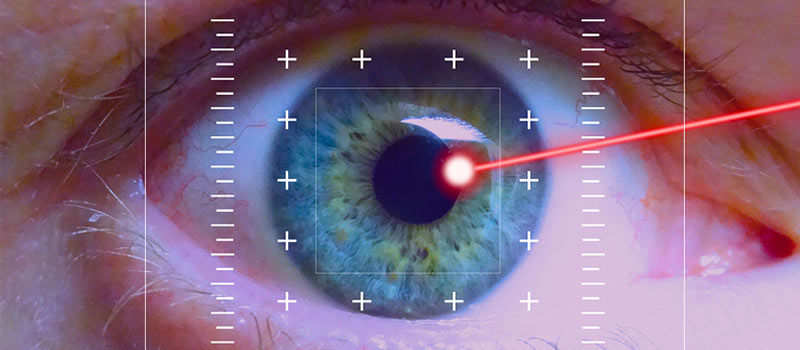THE VALUE OF GÕOD EYESIGHT
GLAUCOMA
Glaucoma is an eye disease that damages the optic nerve by increasing intraocular pressure. Early detection and treatment are crucial, as untreated glaucoma can progress to irreversible blindness. The treatment approachvaries depending on the type and stage of the glaucoma.

FIRST VISIT AND EYE EXAMINATION
Early detection of glaucoma is essential to be able to offer the most effective treatment possible. For this reason, it is important to perform a complete eye examination when the first symptoms appear. Pide cita sin compromiso.

WHY GET GLAUCOMA TREATED AT VISIÕNCLÍNIC+?

PROVEN EXPERTISE
Our surgeons are leaders and specialists in the diagnosis and treatment of glaucoma. Drs. Marta Pazos, Elena Millà and Néstor Ventura are our leading specialists in this field. They perform comprehensive ophthalmological exams to determine the type of glaucoma—whether open-angle, angle-closure, or secondary. Based on the diagnosis, they provide medical treatment or, if necessary, perform surgery, with laser surgery being one of the available options.

STATE-OF-THE-ART TECHNOLOGY
The new surgical suite at visiõnclínic is equipped with the latest advancements for treating glaucoma. We utilize Zeiss® Artevo® microscopes, Victus B&L® femtolasers, and TENEO™ 2 Excimer® Lasers, ensuring the highest standards of precision and care.

MULTIDISCIPLINARY TEAM
At visiõnclínic, our team includes ophthalmologists from Clínic Barcelona who specialize not only in glaucoma but in all areas of ophthalmology. In addition, we work closely with a team of optometrists, allowing us to provide a comprehensive approach to your visual health. As part of Clínic Barcelona, we also collaborate with specialists in other fields who may be involved in your glaucoma treatment.

LEADERS IN RESEARCH
Being part of an university hospital like Clínic Barcelona ensures that our team at visiõnclínicstays at the forefront of research and innovation. Our professionals have published studies in leading scientific journals within the field, and our commitment to translational research enables us to turn scientific discoveries into real benefits for our patients.

EVIDENCE-BASED TREATMENTS
All treatments offered at visiõnclínic visiõnclínic including the various surgical options for glaucoma, are grounded in the latest scientific evidence. Our patients’ health and safety are our top priorities, which is why our care approach is consistently informed by the most recent advancements in medical science.
WHAT IS GLAUCOMA?
Glaucoma is an eye disease that consists of damage to the optic nerve caused by an excessive increase in intraocular pressurer. Intraocular pressure (IOP) is determined by the amount of intraocular fluid called aqueous humor, which is stored in the anterior part of the eye.
As the years go by, and especially after the age of 40, the drainage systems of the eye (trabecular meshwork) responsible for removing the aqueous humor undergo progressive fibrosis until they are unable to filter and remove said intraocular fluid.
In the initial stages, we speak of ocular hypertension, not glaucoma. It is vitally important to diagnose patients at this stage to prevent it from evolving into glaucoma.
WHAT IS GLAUCOMA?
Glaucoma is an eye disease that consists of damage to the optic nerve caused by an excessive increase in intraocular pressure. Intraocular pressure (IOP) is determined by the amount of intraocular fluid called aqueous humor, which is stored in the anterior part of the eye.
As the years go by, and especially after the age of 40, the drainage systems of the eye (trabecular meshwork) responsible for removing the aqueous humor undergo progressive fibrosis until they are unable to filter and remove said intraocular fluid.
In the initial stages, we speak of ocular hypertension, not glaucoma. It is vitally important to diagnose patients at this stage to prevent it from evolving into glaucoma.
TYPES OF GLAUCOMA

OPEN-ANGLE GLAUCOMA
Open angle glaucoma is one of the most common types of glaucoma in ophtalmology. It is a type of glaucoma that affects patients aged 40 and over. Open angle glaucoma, occurs because, despite the eye’s drainage system being open, it does not work properly. Thus, the aqueous humour cannot be eliminated, causing an increase in intraocular pressure and, subsequently, glaucoma. Open angle glaucoma develops very slowly and does not present obvious symptoms.

ANGLE-CLOSURE GLAUCOMA
Angle-closureo or narrow-angle glaucoma occurs when the space through which the aqueous humor should drain is too narrow. This type of glaucoma is commonly seen in individuals with smaller eyes, such as those with hyperopia (farsightedness), or when the lens thickens due to a cataractdevelopment.
In cases where angle-closure glaucoma is triggered by a cataract, the angle can suddenly close completely, resulting in an acute glaucoma crisis. During this crisis, the rapid accumulation of aqueous humor causes a sudden, sharp rise in intraocular pressure. The acute angle-clousure glaucoma is associated with severe pain and a sudden, dramatic loss of vision.

SECONDARY GLAUCOMA
Secondary glaucoma occurs when increased intraocular pressure, is linked to other eye conditions. Causes of secondary glaucoma can include ocular trauma, prolonged use of corticosteroids, intraocular inflammation, such as uveitis, excess pigment, peeling associated with cataratas, hemorrhages, or ocular tumors.
GLAUCOMA DIAGNOSIS
A diagnosis of glaucoma requires a complete and regular ophtalmological examination . Early detección temprana del glaucoma es fundamental para proteger y prevenir la pérdida de visión ya que, como hemos dicho, es irreversible. Como hemos comentado, los síntomas del glaucoma son prácticamente inexistentes, por este motivo, es importante realizar un a complete and detailed eye exam.
A comprehensive glaucoma exam should include measuring intraocular pressure examining the drainage angle, assessing the optic nerve, and evaluating peripheral vision. For those with a family history of glaucoma, a genetic study is also highly recommended.
GLAUCOMA DIAGNOSIS
A diagnosis of glaucoma requires a complete and regular ophtalmological examination . The Early detection of glaucoma is essential to preserve vision, as any vision loss due to glaucoma is irreversible. Given that glaucoma typically has no noticeable symptoms, it is critical to conduct a a complete and detailed eye exam.
A comprehensive glaucoma exam should include measuring intraocular pressure examining the drainage angle, assessing the optic nerve, and evaluating peripheral vision. For those with a family history of glaucoma, a genetic study is also highly recommended.
GLAUCOMA TREATMENT

MEDICAL TREATMENT OF GLAUCOMA
Medical treatment of glaucoma is based on eye drops that, when administered daily, control the patient’s intraocular pressure. The way these eye drops work for glaucoma is different depending on the type; some drops help drain the aqueous humor and others reduce the amount of intraocular fluid produced by the eye. There is no “normal” or standard intraocular pressure. Each patient must be monitored and each one must maintain the ocular pressure that limits the loss of vision caused by glaucoma.

GLAUCOMA SURGERY
Glaucoma is operated on, but not to cure it. Glaucoma surgery aims to reduce the intraocular pressure that may be causing symptoms or vision loss. As we have said, the damaged optic nerve cannot regenerate and glaucoma is chronic, glaucoma surgery does not serve to improve the vision of patients. Glaucoma surgery is performed when, after following medical treatment, the patient continues to have high eye pressure.
· TRABECULECTOMY AND DEEP NON-PERFORATING SCLERCOTOMY
Trabeculectomy and deep non–perforating sclerectomy are the most common glaucoma surgerys. These are filtering surgeries in which an exit route for intraocular fluid is created through the sclera (white part of the eye). A “pocket” is created under the eyelid, invisible to the eye, where the aqueous humor accumulates and is absorbed through the tissues. In this way, intraocular pressure is reduced almost immediately.
· DRAINAGE TUBES
In this technique, through glaucoma surget, a drainage tube is implanted that allows the aqueous humor to escape from the inside of the eye to a reservoir, thus reducing intraocular pressure. The reservoir is located under the conjunctiva and sclera (invisible to the eye) and the intraocular fluid is reabsorbed by the tissues in the area.

GLAUCOMA LASER SURGERY
· SELECTIVE LASER TRABECULOPASTY
Selective laser trabeculoplasty (SLT) may be the best treatment of glaucoma, very effective and safe, for those patients with multiple drug intolerances, damaged ocular surface or who do not wish to “depend” on daily medical treatment .
In general, Trabeculoplasty is usually used in patients who, after following a medical treatment of glaucoma, this is not sufficient or presents complications.
However, its optimal results (30% reduction in intraocular pressure and 70% effectiveness) invite us to consider laser treatment for glaucoma as a highly recommended option.
· IRIDOTOMY
Iridotomy is a laser surgery for glaucoma that aims to treat acute glaucoma attacks. In Idridotomy, the ophthalmologist makes a small hole in the iris that allows the aqueous humor to drain and thus reduce intraocular pressure. This treatment causes immediate relief for the patient as it allows the accumulated fluid to drain immediately.
CANAL VISIÕNCLÍNIC

Our professionals explain the main vision pathologies and their treatment options.
DO YOU WANT TO STAY UP TO DATE ON OUR LATEST TREATMENTS, NEWS AND OFFERS?
VISIÕNBLOG

First EyeWatch drainage implant in our country, the most advanced in glaucoma surgery
We performed the first EyeWatch glaucoma drainage implant in Catalonia and the third in Spain! “This is the most cutting-edge glaucoma surgery that currently exists,” tells us Elena Milla, the surgeon who performed it and one of the glaucoma specialist ophthalmologists on the Visiõnclinic+ medical team.







